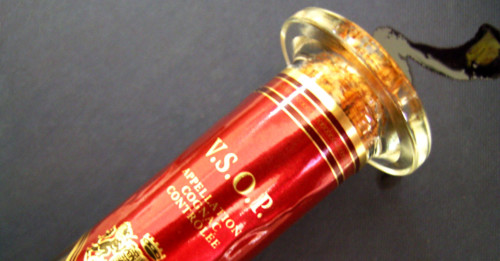As you’re probably aware, liquor labels can be a bit confusing—even with the heroic regulation efforts of the Alcohol and Tobacco Tax and Trade Bureau, there’s a lot of information to take in. And while something like whiskey (or whisky) might confuse with its “Straight Bourbons,” “Single Malts,” “Blended Grains,” and so on, nowhere is the alphabet soup of liquor labelling so confusing as with Cognac and Armagnac, France’s two famous Brandy regions.
You’ve seen them—letters like V.S., A.C., X.O. (where it does not mean “Hug, full stop, Kiss, full stop”). So what does it all mean? Before you try to rearrange the letters like some kind of Sunday jumble, just remember this: all the letters on any bottle of Cognac or Armagnac you’ll see refer to one thing: aging.
Not that that means any of it’s simple, since aging standards really just set minimums (as in the the minimum number of years any component of the blend in the bottle). But many Cognac and Armagnac houses will age well beyond set minimums, meaning quality can vary. Best is to buy in the moderate range, read some reviews, see what you like, and go from there (that is, don’t necessarily start with anything “extra” or “superior,” unless you’ve got cash to spend).
- V.O. (Very Old): Meaning the whole thing’s been aged a minimum of 4 years.
- V.S. (Very Special): AKA “three stars,” means the youngest Cognac or Armagnac in the blend must be a minimum 2 years old.
- V.S.O.P.(Very Special/Superior Old Pale): Means the youngest Cognac in the blend must be at least 4 years old or, for Armagnac, 5 years old (though often it’s much older); “old pale” comes from the use of caramel coloring, which can be used to color-correct, but in “Old Pale” should be omitted.
- Napoleon: Apparently a favorite of Napoleon, otherwise it just designated a Cognac that’s 4 years old or an Armagnac that’s at least 6 years old.
- X.O. (Extra Old): It’s fun that X.O. actually just means “extra old,” because that just seems like some straight-up street terminology. The “extra” here means at least 6 years old, though starting in April 2016 the new minimum will be 10 years old. (See, it’s a bit confusing.)
- Varietal: If and when a Cognac or Armagnac is made with just one grape, it may be named after that grape varietal or include the varietal on the label.
- Vintage: Much more common in Armagnac, when a particular year’s harvest is all that’s gone into the bottle. Cognacs are much more often blended, hence all the different terminology to indicate the age of the youngest eau de vie in the bottle. Vintage Armagnacs carry a hefty price tag.
- Hors d’Age (“Of the Ages”): Literally a way to say “this Cognac is so old, it’d be impolite to ask.” Fair warning, Cognac and Armagnac can lose their lustre after too much aging (some say around 35 years, but Tres Vieille Cognac can be 50 years old), so do some research before any big purchases.
- Cru: Not a statement of age, but place, basically the growing region, which you’ll see more often on Cognac (which has six official growing regions).
